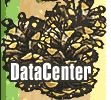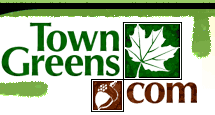The First Ecclesiastical Society of Winchester was incorporated on 1768 and its first meetinghouse was erected some distance south of the present Winchester Center Green. In 1785, the Society purchased the land containing 56 1/2 rods where the present green is located from Dr. Josiah Everett "to build a meetinghouse on, for diverse worship and for a suitable green around the same." The meetinghouse was built on the green in 1786. A whipping post and stocks stood near it. In 1841 a new church was constructed on the land donated by Isaac Bronson just north of the green. It stands on its original site today.
The green was at least partially "landscaped" in 1793 in preparation for "General Training," a gathering of soldiers in the county for drill practice. The chestnut tree stumps that presumably were there since the green was established were removed with teams of oxen and chains, and the resulting holes were covered and leveled. The green was further improved in 1846 when elms were planted. They no longer exist.
Until about 1960, the church, the dwelling to the west, and the structure which is now the post office and lamp museum were all contiguous with the green. In about 1960, the state altered Route 263 to cut across the green separating these properties from it. The Connecticut Historical Commission sign which was on the green was relocated to accommodate road construction. Winchester residents voted at that time not to allow monuments on the green, keeping it, instead, open and without ornament.
There are a total of seven buildings around the green including the Winchester Center Congregational Church in the Greek Revival style at the northeast corner of the green just south of Route 262. It dominates the tiny town center. To the east of the church in the intersection created by Route 263 and Chapel Road is a 19th century schoolhouse once used by the Society for Religious Services. Near the western tip of the green on the north side of Route 263 is a 19th century commercial structure that now houses the post office and a Lamp Museum. The remaining buildings around the green are dwellings dating from the 18th and 19th centuries.
Although this area was originally the primary population center of the town of Winchester, the streetscape around the green was never dense because by 1800 more people lived in the northeast corner of Winchester in Winsted. This was due to the proximity to water power and convenient transportation. Industrial development in Winsted attracted development and Winchester Center remained primarily rural and agricultural.
The present Winchester Center Green is the location of the site of the second meetinghouse of the Ecclesiastical Society of Winchester and retains much of the rural character of the early settlement.






![]()